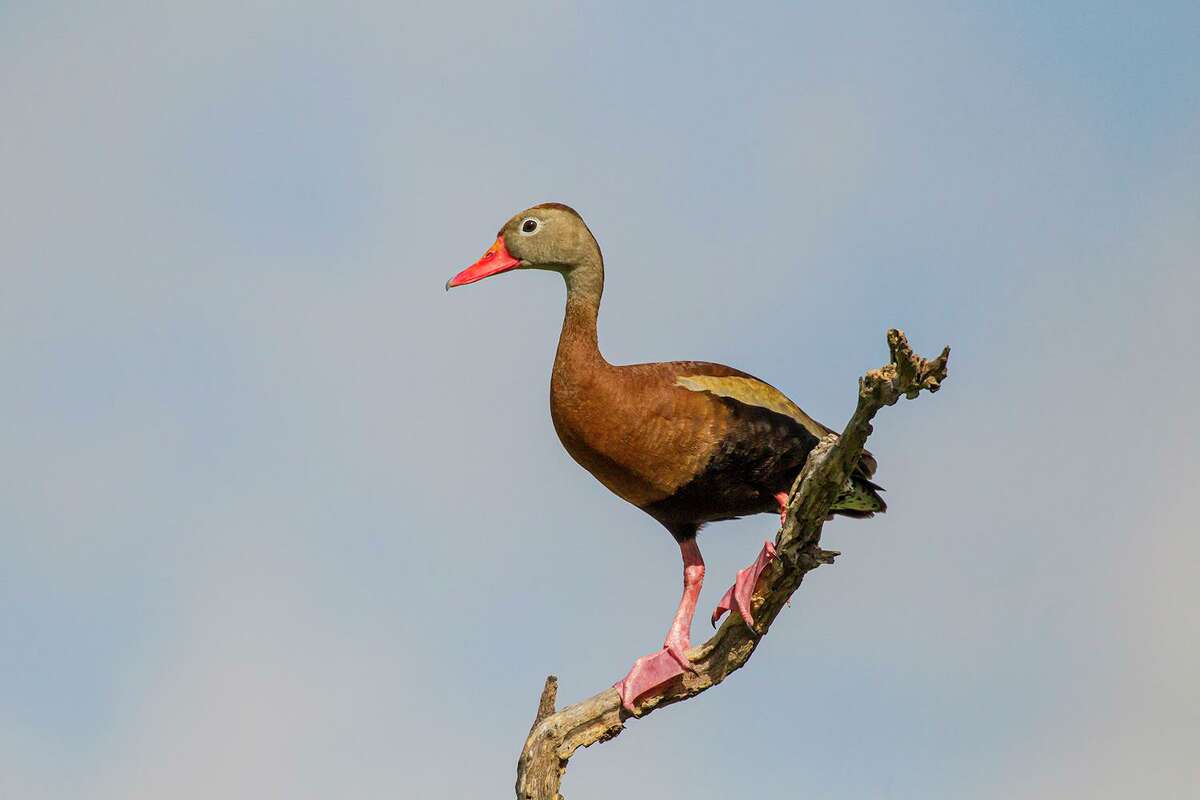Odd-looking black-bellied whistling ducks have moved to Houston
Gary Clark, Correspondent
May 17, 2023Updated: May 18, 2023 2:31 p.m.
 1of3Black-bellied whistling ducks were once called "tree ducks" because of they nest and perch in trees. 1of3Black-bellied whistling ducks were once called "tree ducks" because of they nest and perch in trees.
Kathy Adams Clark/KAC Productions

In my long-ago youth, I'd see black-bellied whistling ducks only in the Rio Grande Valley; and my great-great-grandfather could have only seen them in Mexico.
But now, I look out my window to see the handsome, odd-looking ducks strutting through my yard. Many of you have also seen them in your yard, as I've noticed from emails with attached photos asking, "What are these ducks?"
The birds look like they escaped from an experimental genetic laboratory. They resemble geese, with their long necks, and they stand upright on long legs. Their beaks are distinctly long and flat, like a cross between a duck's and a goose's beak.
But they didn't derive from some laboratory. They're instead members of the whistling duck family, which includes fulvous whistling ducks that breed during summer along coastal prairies and wildlife refuges.
Black-bellied whistling ducks breed in local neighborhoods that have nearby ponds, bayous, creeks and other waterways. During my early morning walks, I hear small flocks flying overhead, uttering their rapid, high-pitched, piercing whistles that sound like "chi-chi-chi-cheee." Duck hunters have appropriately nicknamed them screamers.
Flocks fly fast on a direct path, with wingbeats showing off handsome white wing patches. They also arch their necks when flying, so they appear hunchbacked.
Black-bellied whistling ducks
Black-bellied whistling ducks are classified in the Anatidae family of ducks, geese and swans. They live in groups that forage mostly at night but stroll around neighborhood yards and parks during the day. Pairs mate for life and produce one or two broods per breeding season from May-June.Females lay nine to 18 eggs that hatch in about 25-30 days.The birds residing in Mexico have the nickname pato maizal or “corn duck” because they eat waste grain in harvested corn fields. Fulvous whistling ducks migrate to coastal wetlands and rice fields to breed during summer and can be recognized by bright tawny bellies, black wings and backs with dashes of tan.
Whether in neighborhood yards or on the manicured grass around golf course ponds, the birds placidly strut along the ground. They eat grasses and grass seeds and occasionally snails, spiders and insects.
The birds were once named "black-bellied tree ducks" due to their habit of nesting in tree cavities. But the birds will also nest on the ground by scratching a scrape beneath a dense cover of bushes or trees.
Males and females mate for life. When nesting, they're ideal parents, as both sexes take on the chores of incubating eggs and feeding chicks.
Before 1900, their range extended from South America to Central America and Mexico. After 1900, they moved into the Texas Rio Grande Valley and stayed there more or less until the 1960sc, when springtime breeding populations began heading up the coast.
By the mid-1970s, they were breeding in parts of Houston but would retreat southward during autumn. Eventually, they became year-round residents of Harris and surrounding counties. They've recently advanced along Gulf Coast regions from Texas to Florida and up the Atlantic Coast into Georgia.
houstonchronicle.com |





 1of3Black-bellied whistling ducks were once called "tree ducks" because of they nest and perch in trees.
1of3Black-bellied whistling ducks were once called "tree ducks" because of they nest and perch in trees.
